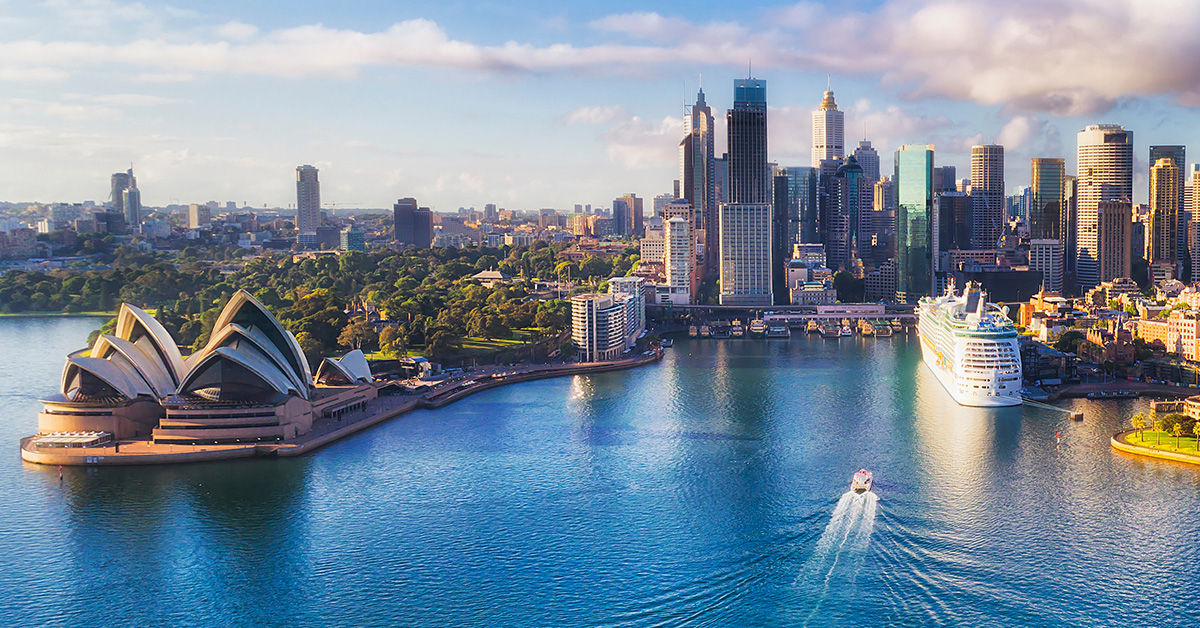With about 25 million citizens, Australia doesn’t even crack the top 50 among the world’s most populous countries. But its fiscal influence is much larger, evidenced by the fact that it’s now the 13th-largest economy in the world. Australia’s gross domestic product grew from $415 billion in 2000 to $1.55 trillion in 2021, according to the World Bank.
In more recent years, Australian investors have stealthily moved up the ranks of the largest cross-border funding sources into U.S. commercial real estate, according to MSCI Real Assets. Australia rose from 20th place in 2020 to No. 14 in 2021 and to No. 11 last year. In 2022, investors from the Land Down Under were involved in a total of 32 deals valued at $2.5 million or more, MSCI reported. Despite unfavorable market conditions, Australian capital sources reduced their allocations into the U.S. by only 8% compared to 2021.
Much of the nation’s investment volume into stateside assets came from the Macquarie Group, a global financial services company that employs more than 18,000 people. Macquarie ranked No. 7 last year among the largest cross-border buyers by volume, MSCI reported. Like many other institutional investors, however, the firm was a net seller in 2022 as it offloaded 45 assets on U.S. soil.
Last year’s largest U.S.-based purchase by an Australian capital source took place in February when Macquarie acquired a 3.8-million-square-foot industrial asset in Wilmington, Delaware, for $392 million. The property is a five-story warehouse and distribution center that was redeveloped only a few months earlier and is now occupied by Amazon.
Macquarie also made a splash in New York City around the same time by shelling out $130 million for a five-story, mixed-use building in Manhattan’s SoHo district. A few months later, Macquarie agreed to lease space on Fifth Avenue in Midtown Manhattan for its U.S. headquarters starting in 2024.
Other Australian investors with sizable U.S. portfolios have been quiet of late. Queensland Investment Corp. (QIC), which owns malls in Northern Virginia, Tampa and Las Vegas, sold five U.S. assets last year but didn’t make a single noteworthy purchase, MSCI reported. It was a similar story for the Australian sovereign wealth manager Future Fund, which placed $765 million into U.S. apartments in 2021 but cut its exposure to foreign investments after its largest quarterly loss in two years.
Whether Australia’s recent growth as a global player in commercial real estate continues is a matter of debate. Professional services firm KPMG noted that the nation’s economy “finished 2022 on a positive note, albeit slightly lower than most economists were predicting.” Domestic inflation stood at 7.8% this past December, although it was forecast to subside to 4.4% by the end of 2023.
Similar to what’s been happening in the U.S., the Reserve Bank of Australia (RBA) has been hiking benchmark interest rates at a pace not seen since the 1980s. In April, however, the RBA broke a string of 10 straight hikes as it sought time to assess the impacts of tightened monetary policy. A recent report from CBRE forecast reduced construction costs and rising rents this year for Australian assets. The industrial and logistics sector there has a vacancy rate of 0.6%, the lowest in the world. Thus, Australian investors could choose to place their time and money into domestic deals rather than going abroad. ●





